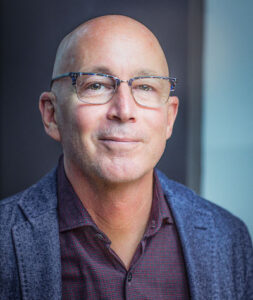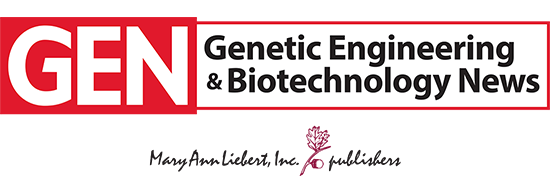
Exosomes are resilient extracellular vesicles that are a means for cells to communicate throughout the body. For decades, researchers have recognized their medical potential, but the ability to engineer exosomes with predictable and reproducible therapeutic effects has remained an elusive goal.
That’s where Codiak BioSciences comes in. Codiak is a Boston-based clinical-stage biotechnology company that has spent years of rigorous research to solve this challenge. Codiak designs and engineers exosomes, loads them with various types of therapeutic molecules including nucleic acids and small molecules, and directs them to target and specific cells. Their proprietary manufacturing process is designed to efficiently and reliably produce exosome therapeutic constructs for multiple clinical targets or indications at scale.
GEN Edge spoke to Douglas E. Williams, PhD, Codiak’s president and CEO, to discuss how the company has grown from the ground up to develop a new class of medicines with the potential to transform the treatment of a wide spectrum of diseases with high unmet medical need.
GEN Edge: What was the company’s founding vision and mission?
Douglas Williams: The company originally started back in November 2015, when we officially launched with the series A announcement. The whole idea was based on the fact that exosomes are a naturally occurring communication system in the body. They’re effectively little lipid nanoparticles that cells release. There’s a payload inside them that gets delivered to a neighboring cell or a distant cell. When that happens, the payload influences the behavior of the recipient cell. It’s a bit like a FedEx system in the body. The idea was to simply co-op that and be able to pack the box with whatever messages we wanted to deliver to particular cells of our choosing.
GEN Edge: What has the journey been like over the past six years?
Williams: It’s been a lot of basic discovery. In the early days, there was a lot known about exosomes, but no standard set of tools that people had agreed to with respect to how to make, characterize, and purify them. We had to start from scratch and learn the ropes in terms of how to produce purified exosomes so that we knew what we were working with and characterize them to convince ourselves that we were making the same thing over and over again.
Being able to take the next step, which is to control what goes into the exosome and to build a platform that allows us to manufacture these things in a state-of-the-art biologics manufacturing format that the regulators are going to expect of us.
It started with a lot of basic science and humbling efforts to work with exosomes. But it’s safe to say that we’ve become pretty good at what we do. The company is well out in front in terms of developing a platform to use exosomes, to be able to engineer them, and, probably most importantly, be able to manufacture them at a scale to consider large and small markets.
As we like to say: if you can’t make it, it’s not a drug.
GEN Edge: What are the challenges of having to do everything from R&D to manufacturing under your own roof?
Williams: The advantage is largely control—being able to bear down on individual problems and move resources around. The great thing about a relatively small startup stage company is that it’s full of people who just want to roll up their sleeves and make things work. We’ve got a great team of scientists that work across traditional departments aligned to get things done.
Our research team and our chemistry, manufacturing, and controls (CMC) team are about the same size, which is unusual for an early-stage company. But there’s an awful lot of basic science that goes into even the CMC aspects of what we do. A lot of the analytical characterization of the exosomes is pretty hardcore biochemistry and nanoparticle exploration.
The team itself is an interesting amalgamation and that control has allowed us to identify problems, solve them, and then move on. Frankly, with 100 people, we’re able to get a lot done given the size of the organization. We now have two programs in the clinic with a third expected to have an IND filing in the second half of this year. For me, it’s pretty gratifying to see the progress the team has been able to make on both the R&D side with the engineering but also on the manufacturing side, which we started on day one to build a manufacturing capability. That was one of the hurdles that we identified at the outset of the company.
GEN Edge: Has there been any pushback to the technology?
Williams: No, I don’t think there’s been pushback. It’s an area where we’re now creating a technology that is ready for primetime. We’re using modern-day biologics manufacturing technologies. Our cell lines that grow in bio-reactors grow in chemically defined media. There are no animal source raw materials. We’ve now been able to get in front of the regulators, both in the U.S. and the U.K., to talk about the process we’ve created and satisfy them sufficiently to enable human dosing to begin as of last year. A lot of progress in terms of creating a platform production technology that we can use over and over again. It’s a standard set of methods that allow us to make exosomes of different flavors with minor tweaks to the purification process. It is a platform now in the truest sense of the word.
The biggest barrier at the beginning was just the old methods for production and the use of ultracentrifugation. The purification process that we’ve developed and had to develop no longer uses ultracentrifugation. It’s now standard chromatography and filtration techniques that we’ve been able to develop. We also created a suite of analytical tools in-house because there weren’t standard methods. People were of the mindset that you couldn’t possibly make enough of these things using those methods to create a real therapeutics platform. That was part of what got us to realize that we had to come up with a new method for certainly the purification side of things to make it a real platform and to enable us to go up or down and scale, depending upon the markets that we’re trying to capture here.
GEN Edge: Does Codiak participate in any partnerships?
Williams: We’ve done a couple of partnerships, one with Jazz Pharmaceuticals in oncology. Those are targets that they brought into the collaboration that they’ve been working on for a while. They’ve never been able to actually deliver them and create a therapeutic index, so that’s why they came to us.
More recently, with Sarepta Therapeutics to try to figure out how to get delivery into muscle cells and some other cell types that are of particular interest to them. I think that speaks to the breadth of our therapeutic areas. We’ve got vaccines, some gene therapy applications, and programs in immuno-oncology and neuro-oncology. It’s a broad platform. It’s safe to say there’ll be other partnerships unlocking other organ systems that we really don’t have any intention of moving into.
GEN Edge: Why did Codiak choose to become a publicly traded company? Was it to get more capital to take on these obstacles you just illustrated? How has it affected the company?
Williams: It was very much about being able to access larger pools of capital, particularly as the company is moving into the clinic and has multiple programs that are in the clinic right now. Being able to access those larger pools of capital is essential for us to be able to continue to grow the business and continue to grow our teams to keep up with the demands that programs advancing from phase one to phase two to phase three.
It was the first time that I’ve done an IPO. I’ve been in the business for a long time, but I found the IPO process—in addition to being exhausting, which is what everyone will tell you —was a lot of fun. To get through the process and for the first time to see the Codiak name on the NASDAQ jumbotron in Times Square was very exciting for the team to see that formal transition from private to public company take place.
We’re now in a position where—to prosecute our game plan, which is to become a fully integrated company that is discovering, developing, and eventually marketing our own products—being a public company and being able to access that capital, as we need it, is an essential part of the biotech game.
GEN Edge: What are the one-year, five-year, and ten-year goals of the company?
Williams: We are focused on near-term value inflection points for the company. By that, I mean the data readouts for the two lead programs and starting the third program, which will all happen in the next calendar year. There’s a huge amount of information back in the R&D group that is slowly coming out. We have several presentations at gene therapy meetings, and we’ve just published several manuscripts of data that has been accumulating over time. There’s a lot more visibility and noise that we’re making, a lot more understanding of the various therapeutic directions. We can go with a platform like this, and part of that is manifested in some of the partnerships we’ve been able to establish as well. The next year is all about execution on the lead programs and continuing to be visible in an R&D sense.
Five years from now, I’d like to think that at least one of our programs will have made it across the finish line. Obviously, with various regulatory tools available, like breakthrough designation, it’s possible to think that way—that we could quickly move from where we are today to a registered product.
In ten years, I’d love to see us as one of the major biotech companies in the space with multiple programs on the market and several late-stage clinical programs. The growth strategy will lead us to become a fully integrated company—doing everything from discovering to the marketing around products.
GEN Edge: What would you say are the major challenges standing in the way of this trajectory?
Williams: With any new modality—this is a novel medicine that we’re developing— undoubtedly there will be some twists and turns along the way. The thing I’ve learned over 30 years in this business is that things rarely happen in a straight line, you just have to continue to maintain that mindset of being nimble, being problem solvers, and being aware of the data and what the data is telling you. And, of course, correct accordingly.
It’s not that I worry about. It’s a situation where we’ve got to manage our way through the data readouts and look at what it’s telling us about what our next step should be in our programs.



